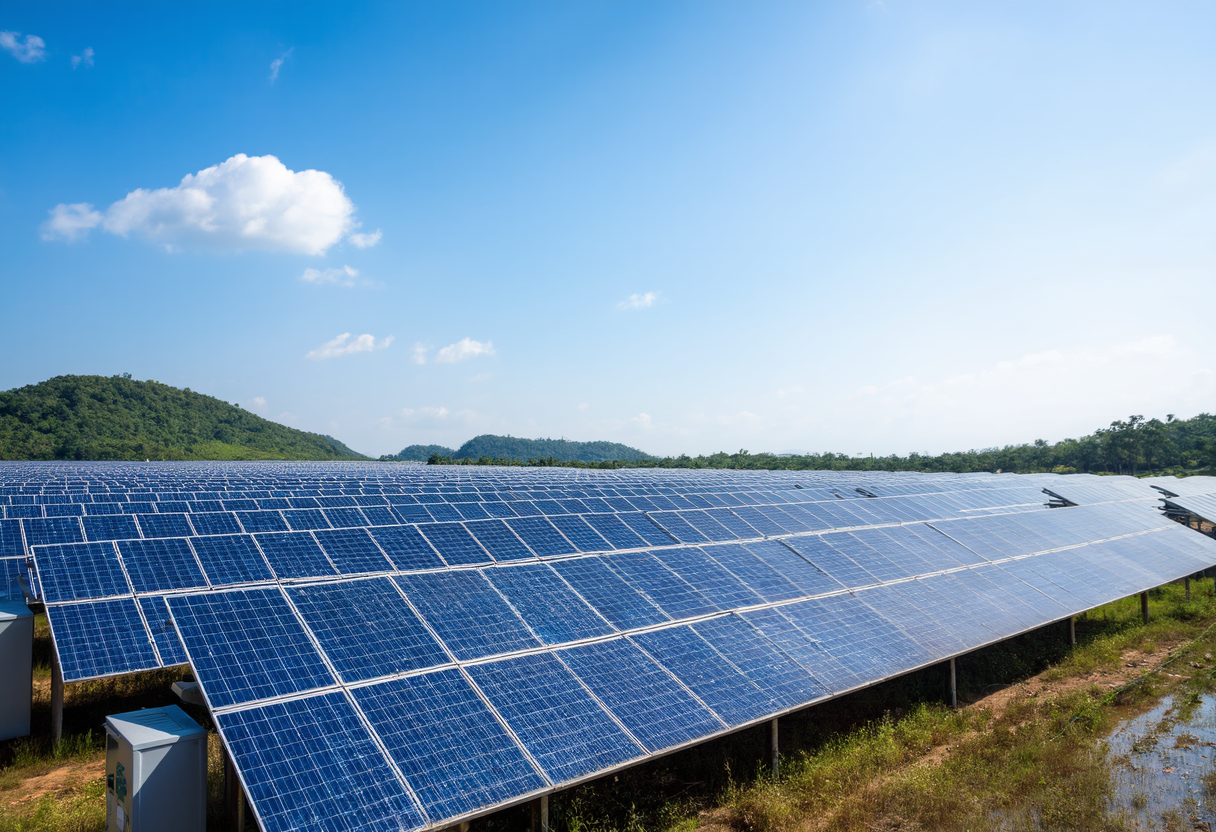The Rising Dominance of Polycrystalline Solar Panels in Renewable Energy
Polycrystalline solar panels are becoming increasingly important in the renewable energy landscape due to their efficiency and cost-effectiveness. This article explores why these panels are gaining widespread adoption, their benefits over other technologies, and what this trend means for future solar energy initiatives. As the demand for sustainable solutions grows, understanding polycrystalline solar panels is essential for consumers and businesses alike.
The Emergence of Polycrystalline Solar Panels
The advent of polycrystalline solar panels represents a significant evolution in solar technology. With their unique structure made up of multiple silicon crystals, these panels offer a blend of efficiency and affordability that has captivated both consumers and industry experts. Unlike monocrystalline panels, which are known for their high efficiency, polycrystalline panels are typically more budget-friendly. However, their thermal and energy performance does not significantly lag, making them a popular choice for residential and commercial installations. In a world increasingly oriented toward renewable energy, the rise of polycrystalline solar panels cannot be overlooked. They provide an opportunity to harness solar power effectively, especially in regions with ample sunlight, thus contributing to a more sustainable energy future.
Benefits of Polycrystalline Solar Panels
Polycrystalline solar panels offer numerous advantages that appeal to diverse energy consumers. One of the most significant benefits is their environmental impact; they are crafted from liquid silicon, making them more sustainable than some alternatives. Additionally, polycrystalline panels tend to have a longer lifespan, which can lead to better long-term investments for homeowners and businesses. The installation process for these panels is also straightforward, further adding to their practicality. Many users have reported satisfaction not only with the cost-saving aspect but also with the reliability of energy production over time, making polycrystalline solar panels notable contenders in the renewable energy market. Furthermore, reduced material waste during manufacturing enhances their appeal from an ecological perspective.
Economic Viability of Polycrystalline Solar Panels
When evaluating the economic viability of polycrystalline solar panels, several factors come into play. While the initial installation cost is crucial, the return on investment is a vital consideration for potential buyers. As advancements in technology have improved their efficiency, polycrystalline panels are becoming increasingly competitive in terms of price per watt. Additionally, government incentives and rebates play a significant role in promoting their adoption. By investing in solar energy, individuals and businesses can not only save on energy bills but also contribute to the national grid, aiding energy independence. Economic analyses indicate that the ongoing reduction in production costs is likely to make polycrystalline solar panels an even more attractive option going forward.
Comparative Efficiency: Polycrystalline vs. Monocrystalline
While monocrystalline panels often steal the spotlight due to their high efficiency rates, polycrystalline solar panels hold their ground in various scenarios. For instance, in situations where space is not a constraint, the slightly lower efficiency of polycrystalline panels may not be a deterrent. Additionally, these panels typically perform better in high temperatures, making them suitable for regions with extreme weather conditions. Users have noted that energy production from polycrystalline panels can be surprisingly consistent, even under less-than-ideal conditions. This comparative analysis leads many to appreciate the versatility of polycrystalline solar panels, further solidifying their position in the solar market.
The Future of Polycrystalline Solar Panels
Looking ahead, the future for polycrystalline solar panels seems promising. As technological innovations continue to emerge, these panels are likely to benefit from improved efficiency and cost reductions. Additionally, the push towards sustainable energy solutions will drive further research in solar technology, enhancing the features of polycrystalline units. Consumers are becoming increasingly aware of their energy choices, leading to more informed decisions regarding their investments in solar technology. The growing community advocating for renewable energy solutions only strengthens the market presence of polycrystalline solar panels. Ultimately, these panels may serve as an integral part of achieving a cleaner, greener future.
A Unique Perspective on Solar Adoption
An original viewpoint on the adoption of polycrystalline solar panels is their capacity to democratize energy access. In many areas, the affordability of these panels makes them a go-to option for lower-income households aiming to transition to renewable energy. The availability of financing options and community solar projects further facilitates access. As more individuals become equipped with solar technology, the implications for energy equity improve. By educating consumers about polycrystalline solar panels, stakeholders can empower more people to engage in sustainable energy practices, fostering a broader movement towards environmental responsibility.
